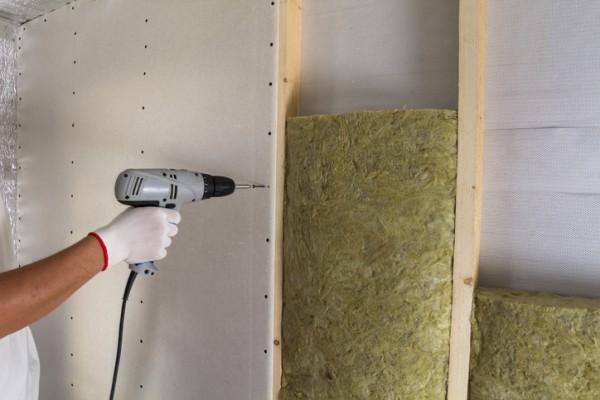
When it comes to designing or renovating a home, acoustics are often overlooked. But how sound behaves in a space can significantly impact comfort and functionality, whether you’re building a home theatre, designing an open-plan living area or creating a peaceful bedroom retreat.
There are three key ways that sound interacts with surfaces: reflection, diffusion and absorption. Understanding the difference between them can help you make better choices when it comes to layout, materials and finishes.
Sound reflection
Sound reflection occurs when sound waves hit a surface and bounce back into the room. Hard, smooth materials like concrete, glass, brick or timber are highly reflective. This is why rooms with lots of bare walls and hard flooring often sound ‘echoey’ or loud.
In home environments, too much reflection can cause sound to become muddy or overwhelming, especially in spaces like media rooms, open-plan kitchens or stairwells. Minimising excessive reflection is essential for controlling unwanted noise and improving clarity.
To reduce sound reflection, consider:
- Soft furnishings like rugs, curtains and upholstered furniture
- Acoustic wall panels or ceiling tiles
- Carpeted floors or timber with underlay
- Bookshelves and décor to break up large flat surfaces
Sound diffusion
Diffusion happens when sound waves hit an uneven or irregular surface and scatter in multiple directions. This helps distribute sound more evenly throughout a space, preventing harsh echoes or ‘dead’ spots.
In a well-designed home theatre or music room, diffusion is just as important as absorption. It maintains clarity while preserving the natural feel of the sound.
You can introduce sound diffusion by using:
- Textured wall surfaces or decorative panelling
- Open shelving filled with books or objects
- Timber slats or battens
- Purpose-built diffusers (available through acoustic suppliers)
Sound absorption
Absorption occurs when a material soaks up sound energy rather than reflecting it. This reduces reverberation (the lingering of sound in a room) and helps create a quieter, more controlled acoustic environment.
Soft, porous materials are best for absorbing sound. In the home, this includes:
- Plush curtains and soft blinds
- Wall-to-wall carpet with quality underlay
- Acoustic insulation in internal walls and ceilings
- Foam or fabric acoustic panels
Absorption is especially important in bedrooms, offices, nurseries or apartments—anywhere you want to block out noise or stop sound from travelling room to room.
Practical applications in Australian homes
In many Australian homes, the move toward open-plan living, polished concrete floors and minimalist interiors means more hard surfaces—and that often leads to poor acoustics. Thankfully, you don’t need to sacrifice your aesthetic to improve sound quality.
A balanced approach using a mix of sound-absorbing and sound-diffusing materials is ideal. Even adding a few strategically placed curtains, rugs and wall hangings can make a noticeable difference.
For multi-residential developments or duplexes, acoustic insulation is critical. Complying with AS/NZS 2107 (Acoustics—Recommended design sound levels and reverberation times for building interiors) ensures you meet expected comfort and performance levels.
Final thoughts
Whether you’re renovating a single room or building an entire home, understanding how sound interacts with your space is key. Reflection, diffusion and absorption all play a role in shaping the acoustic quality of a home.
By choosing the right materials and layout, you can create spaces that sound as good as they look—comfortable, peaceful and fit for modern living.





